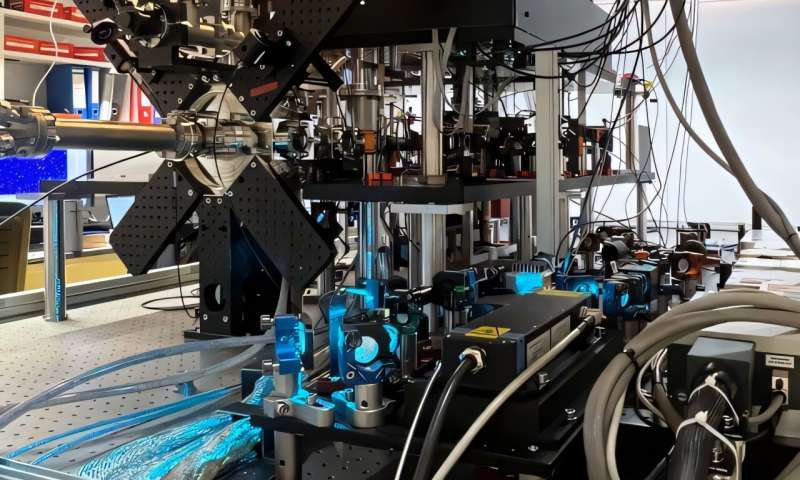
November 27, 2024 by University of Innsbruck
Collected at: https://phys.org/news/2024-11-capturing-complex-atoms-optical-tweezers.html
A team led by Francesca Ferlaino has set a new milestone in atomic physics by trapping individual erbium atoms in optical tweezers for the first time. Taking advantage of erbium’s complex electronic structure, which opens up new degrees of freedom and possibilities, this advancement opens the door to a range of innovative experiments in quantum science. The research is published in Physical Review Letters.
The achievement enables a groundbreaking approach to the study of elements with multiple valence electrons—a realm previously dominated by simpler atoms with one or two valence electrons. Erbium, which possesses 14 valence electrons, introduces new degrees of freedom and opens up exciting opportunities for quantum experimentation, enabling the exploration of previously uncharted atomic behaviors.
“The complexity of these atoms allows us to explore more nuanced interactions between particles, providing a quantum playground with incredible potential for developing new experiments,” explains Manfred Mark, co-supervisor of the experiments.
Complex atomic control and novel imaging techniques
Beyond trapping erbium atoms, the research team has developed imaging methods that utilize erbium’s diverse internal states. By inducing fluorescence in different wavelengths, they achieved two unique imaging techniques: one in the blue spectrum for ultrafast, population-resolved imaging—a novelty in tweezer physics—and another in yellow for nearly non-destructive observation.
This allows researchers to closely monitor the atoms’ behavior without disturbing their quantum states, and it is also slow enough for continuous probing of the system. “These new imaging methods bring unprecedented versatility to the study of these quantum systems,” says Daniel Schneider Grün, one of the first authors of the study. “We can now observe these complex atoms in ways previously not possible.”
Pushing quantum boundaries with complex atoms
While erbium atoms have been studied in optical lattices, this research introduces a novel approach with optical tweezers. Optical tweezers utilize tightly focused laser beams, where the size of the focused light corresponds to a fraction of the size of a human red blood cell. “Unlike optical lattices, tweezers allow greater freedom to arrange atoms in customizable geometries and enable real-time reconfigurations of the particles,” explains Grün.
The research team, known for its expertise in manipulating rare earth elements such as erbium and dysprosium, has previously achieved breakthroughs like the Bose-Einstein condensation of erbium. With a network of collaborations with experienced theorists established in recent years, they benefit from cutting-edge insights into the properties of these complex atoms, including Rydberg states, which play a pivotal role in this setup.
Unlocking new quantum interactions
The researchers’ next steps involve inducing interactions between erbium atoms via Rydberg excitation, a process that leverages one of the 14 valence electrons, while the others serve as quantum probes or registers.
This enhanced complexity paves the way for an exciting new chapter in quantum science, where complex atoms with multi-electron configurations can be precisely manipulated, studied, and harnessed in transformative ways. “This is truly Terra Incognita,” says Ferlaino.
More information: D. S. Grün et al, Optical Tweezer Arrays of Erbium Atoms, Physical Review Letters (2024). DOI: 10.1103/PhysRevLett.133.223402. On arXiv: DOI: 10.48550/arxiv.2406.16146
Journal information: Physical Review Letters , arXiv

Leave a Reply